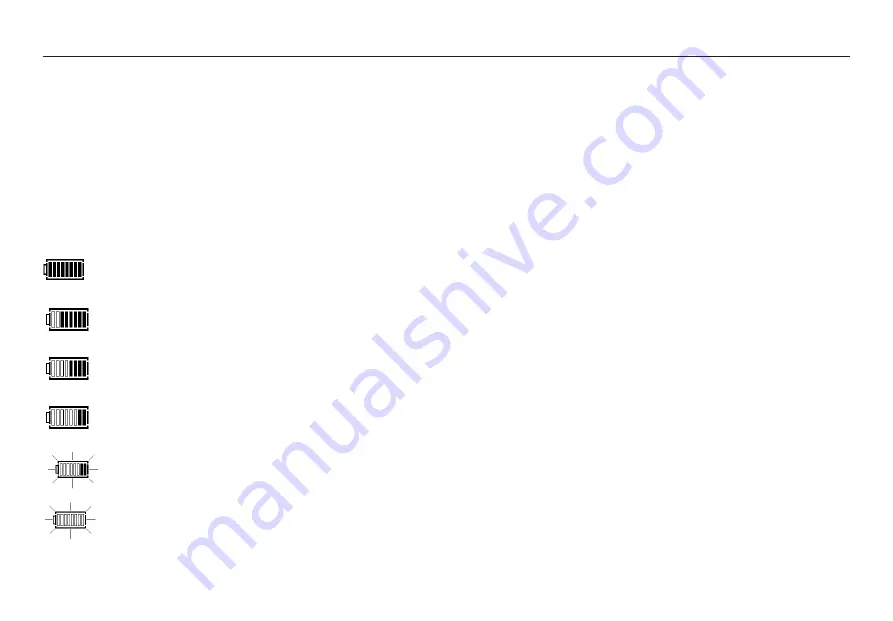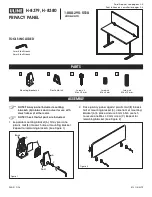
Batteries
Battery type:
8 x LR6 (AA), 1.5 V Alkaline, or 8 x 1.2 V NiCAD, or 8 x
1.2V NiMH
The battery condition is continuously displayed by the bar-graph type
symbol (DET3TC, DET3TD and DET4TD) or by switching to the battery
setting and pressing the TEST button (DET3TA).
Figure 1 shows the progression of the battery indicator (for the DET3TC,
DET3TD and DET4TD) which gives a qualitative status of the battery charge
condition.
Fully charged battery
75% charged battery
50% charged battery
25% charged battery
Some testing still possible but battery may fail at any
time
Symbol flashes when there is not enough charge to
do a test and the instrument will turn itself off
Figure 1: Battery life indication (DET3TC, DET3TD, DET4TD)
REPLACING BATTERIES AND FUSES
Note:
Fully charged NiMH or NiCAD rechargeable batteries show a lower
charge than alkaline batteries, and may not give much warning before
becoming exhausted
To replace batteries
Warning:
Do not operate instrument with the battery cover removed.
1. To avoid the possibility of electric shock, switch instrument ‘OFF’ and
disconnect the instrument from any electrical circuits.
2. The rear cover must not be opened if the test leads are connected.
3. To avoid the possibility of electric shock, do not press the test button or
touch the fuse when changing batteries.
4. To remove the rear cover, release the screw at the bottom of the cover
and lift the cover upwards.
5. Remove the dead cells.
6. Refit new batteries observing the correct polarity as marked on the
battery compartment.
7. Replace the instrument back cover and secure by tightening the
retaining screw.
Warning:
- Incorrect battery cell polarity can cause electrolyte leakage,
resulting in damage to the instrument. If the battery condition indicator
does not show a full charge when battery cells are new, a cell may be
reversed.
Note:
Battery cells should not be left in an instrument that may remain
unused for extended periods.
Fuse
Fuse type:
500 mA (F), HBC, 50 kA, 600 V (32 x 6 mm)
10








































